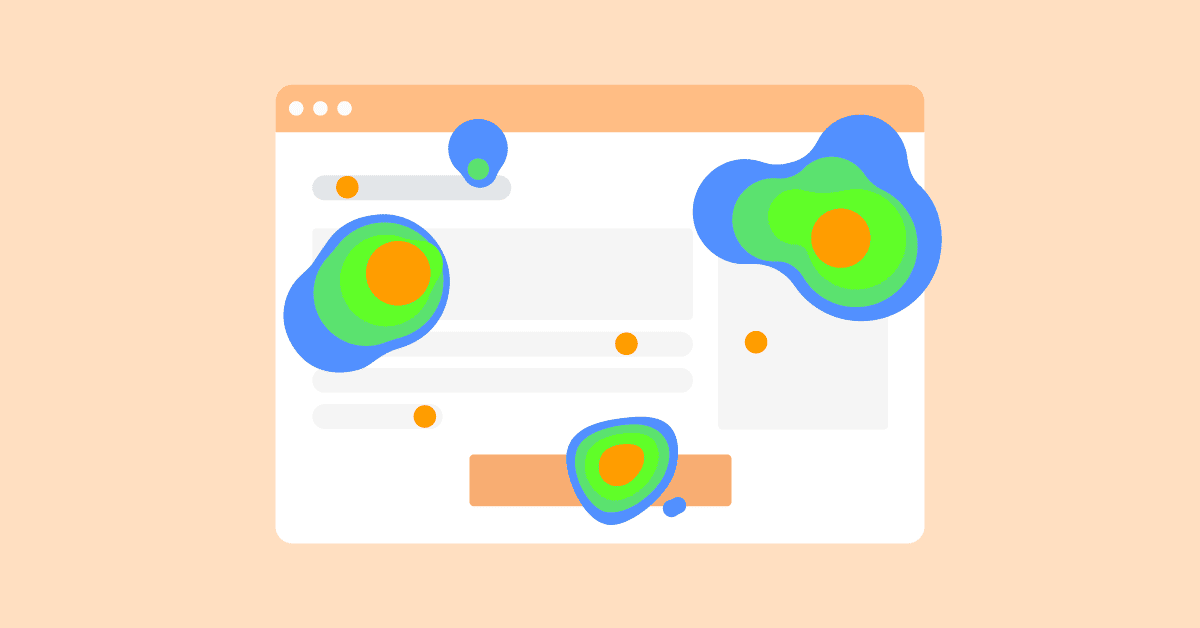In the digital age, website conversion rates are a vital metric for businesses aiming to transform visitors into customers. One of the most effective tools to analyze and optimize these conversion rates is the use of heatmaps. Heatmaps provide businesses with visual insights into user behavior, allowing them to understand how visitors interact with a website. By analyzing this data, businesses can make informed decisions to enhance the user experience and, ultimately, improve conversion rates.
This article will explore the various ways heatmaps can be used to increase website conversion rates, discussing their benefits, the types of heatmaps available, and how to implement changes based on heatmap insights.
What are Heatmaps?
Heatmaps are graphical representations of data that show how users engage with a webpage. These visualizations use color gradients to indicate areas of high and low interaction, helping businesses understand which parts of a page attract the most attention and which are overlooked. Hot colors like red, orange, and yellow highlight areas with high interaction, while cooler colors like blue and green represent areas with low engagement.
For businesses looking to optimize website performance, heatmaps are an essential tool for identifying user behavior patterns. Whether it’s determining where users click, scroll, or move their mouse, heatmaps can provide valuable insights that help businesses refine their website design and content for better user engagement and conversions.
Types of Heatmaps
There are several types of heatmaps that can be used to gather different insights into user behavior. The most common include click maps, scroll maps, and movement maps. Each offers a unique perspective on how users interact with a webpage, and by using them together, businesses can develop a comprehensive understanding of visitor behavior.
Click maps show where users are clicking on a webpage, revealing which buttons, links, and images are most engaging. Scroll maps track how far down the page users scroll, indicating whether important content is visible or being missed. Movement maps, on the other hand, track the user’s mouse movement, helping businesses identify areas where visitors pause or linger.
By utilizing these different types of heatmaps, businesses can pinpoint areas of a website that require improvement to boost engagement and increase conversion rates.
The Role of Heatmaps in Improving Conversion Rates
Heatmaps provide a wealth of data that can be leveraged to improve website conversion rates. When analyzing heatmap data, businesses can identify various elements on a webpage that may be hindering or enhancing user engagement. For instance, if a click map shows that users are frequently clicking on non-clickable elements, it may indicate that the page design is confusing or misleading.
Moreover, heatmaps can help businesses optimize the placement of call-to-action (CTA) buttons. If the heatmap shows that users are not interacting with the CTA, it may be necessary to make the button more prominent, change its color, or reposition it to a more visible area of the page.
Incorporating the insights from heatmaps allows businesses to make data-driven decisions about their website design and content. This process of continuous improvement, driven by user behavior analysis, can lead to significant increases in conversion rates.
Analyzing Heatmap Data for Better User Experience
Heatmaps are particularly useful in understanding how users interact with different parts of a webpage, but they are only as effective as the insights they provide. One important aspect to consider is user engagement with the navigation menu. For example, if a click map shows that users are consistently clicking on a particular section of the menu, it may indicate that the content in that section is highly valuable. Conversely, if certain sections receive little to no interaction, businesses can consider restructuring their navigation to make high-value content more accessible.
Another common insight from heatmaps relates to user frustration. For example, heatmaps might reveal that users are repeatedly clicking on non-clickable elements, suggesting that they expect those elements to perform a function they do not. By correcting these design flaws, businesses can improve the overall user experience and reduce friction in the user journey, leading to higher conversions.
Using heatmaps as a diagnostic tool helps businesses identify and rectify these issues, ensuring that their websites are optimized for user satisfaction and conversion.
How Heatmaps Can Improve Mobile User Experience
Mobile traffic has become a significant part of website visits, and heatmaps play a crucial role in optimizing websites for mobile users. As mobile browsing behavior differs from desktop usage, businesses need to adapt their website design to meet the unique needs of mobile visitors. Heatmaps provide insights into how mobile users interact with a website, helping businesses optimize their design for smaller screens and touch-based navigation.
For example, a scroll map might show that mobile users only scroll halfway down the page before exiting. This data suggests that important content or CTA buttons should be moved higher on the page to capture user attention before they leave. Additionally, click maps can reveal which elements are too small to tap on a mobile device, prompting design changes to ensure a smoother user experience.
By leveraging heatmap data, businesses can create a mobile-friendly website that delivers a seamless experience for mobile visitors, increasing the likelihood of conversions from this growing audience.
Integrating Heatmap Insights into Conversion Optimization
The key to improving website conversion rates lies in integrating heatmap insights with other analytical tools. While heatmaps offer valuable visual insights, they are most effective when combined with other data sources like Google Analytics or A/B testing tools. This comprehensive approach allows businesses to validate their heatmap findings and make informed decisions that are backed by multiple data points.
For instance, if a heatmap reveals that users are not clicking on a particular CTA button, businesses can run A/B tests to determine whether changing the color, size, or placement of the button leads to increased interaction. Similarly, combining heatmap data with session recordings can provide deeper insights into why users behave a certain way, helping businesses refine their optimization strategies further.
By incorporating heatmap data into a broader conversion rate optimization (CRO) strategy, businesses can systematically improve their website’s performance and drive higher conversion rates.
Case Study: The Role of Heatmaps in Successful Website Optimization
Heatmaps have proven to be an effective tool in optimizing websites for better conversions. For example, The Elite Firms—a leading marketing and business strategy platform—used heatmaps to analyze user behavior on their website and identified areas where visitors were dropping off. By adjusting their content layout and improving the visibility of their CTA buttons, they were able to enhance the overall user experience and increase their conversion rates significantly.
By using heatmap insights to guide design changes, Elite Firms saw a 25% improvement in conversions over a three-month period. This case study highlights the value of using heatmaps to gain a deeper understanding of user behavior and make data-driven adjustments to optimize website performance.
Final Thoughts
Heatmaps are an invaluable tool for improving website conversion rates by providing visual insights into user behavior. By analyzing heatmap data, businesses can optimize their website design, improve user engagement, and increase the visibility of important elements like CTA buttons. Heatmaps also play a critical role in improving the mobile user experience, ensuring that websites are accessible and user-friendly across all devices.
When combined with other analytical tools and a comprehensive CRO strategy, heatmaps empower businesses to make data-driven decisions that lead to higher conversion rates. Whether it’s identifying design flaws, improving content visibility, or enhancing the overall user experience, heatmaps offer a powerful solution for businesses looking to optimize their websites for success.




